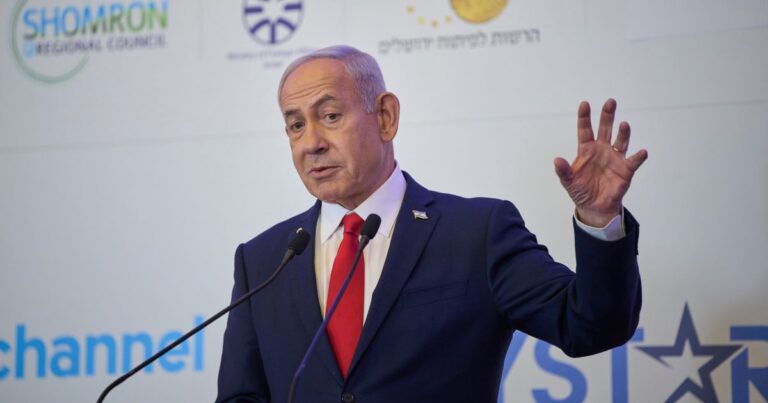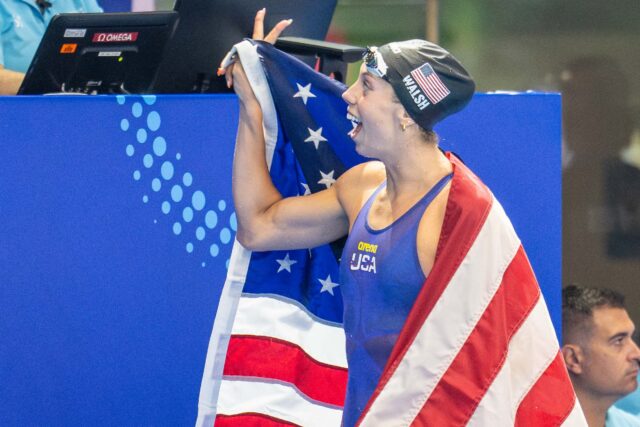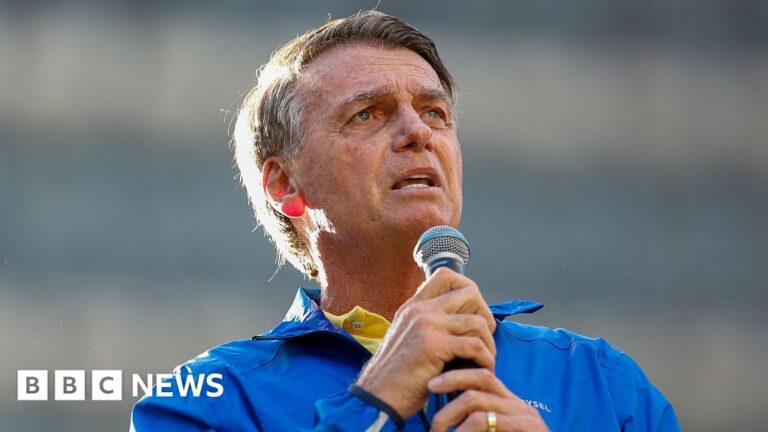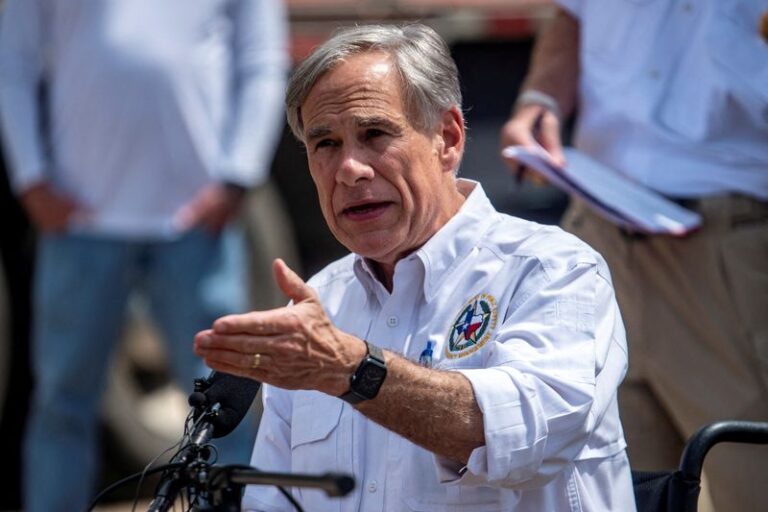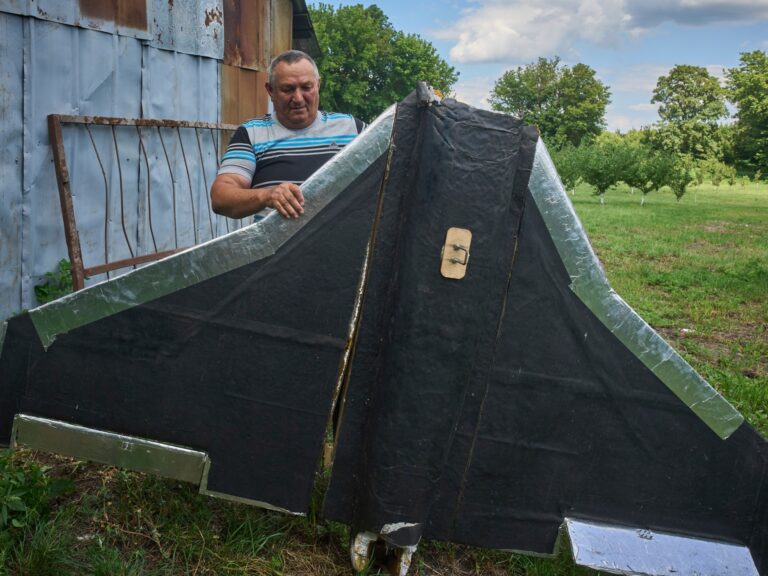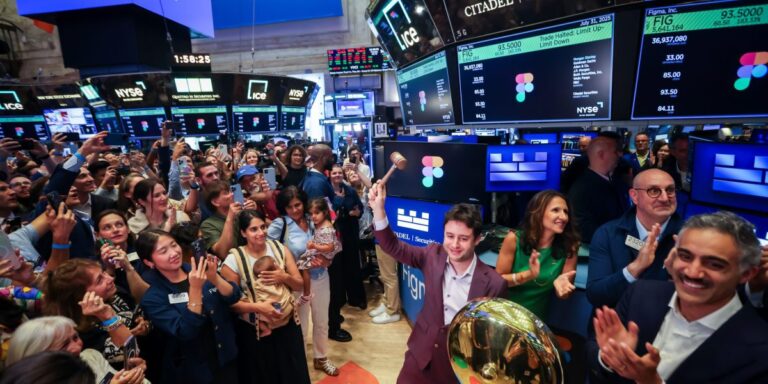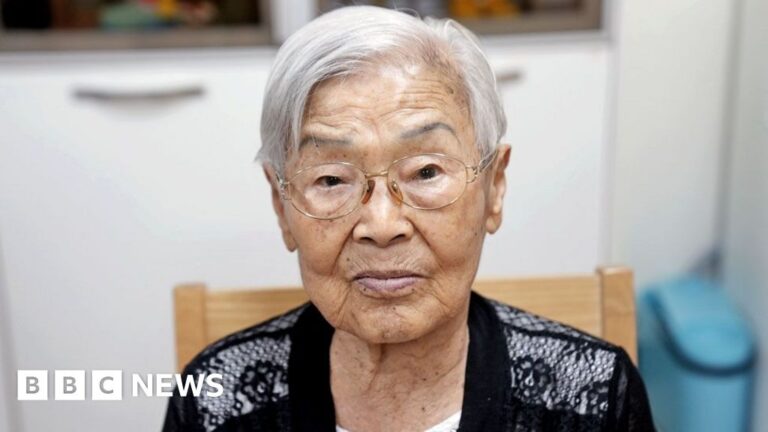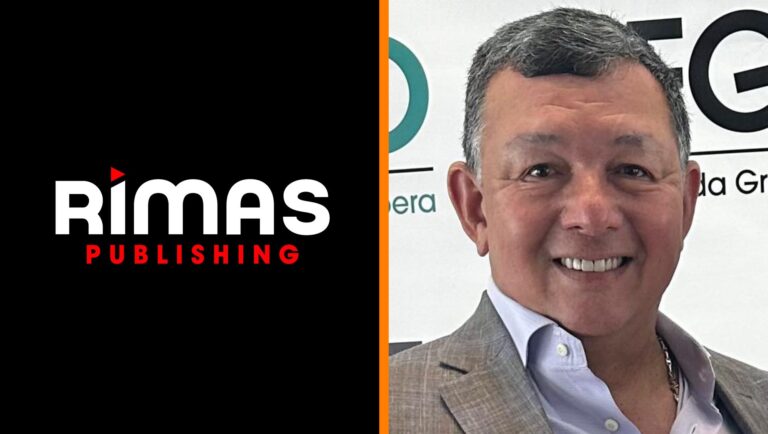To most of the music world, Rafael Ricardo Jiménez-Dan remains an enigma.
Despite founding Rimas in 2014 – the company behind global superstar Bad Bunny and one of the most influential forces in Latin music – he has never publicly discussed his journey, his vision, or the controversial job he once held in Venezuelan politics.
That changes today.
Speaking from his home in Florida, the wealthy Venezuelan entrepreneur is finally ready to tell his story. It’s a tale of risk-taking, family sacrifice, and the relentless pursuit of a dream that would ultimately reshape the Latin music landscape.
Yet, according to Jiménez-Dan, it’s also a story that has been distorted by inaccurate media speculation, legal filings, and political opportunism.
The catalyst for our conversation was MBW’s recent coverage of the independent music revolution, which referenced various media reports about Rimas’s origins.
Jiménez-Dan is particularly keen to clear up details of his history working in the government of Hugo Chávez.
This association has been whipped up not only by media reports but also by one particular headline-chasing politician in Puerto Rico, who used it as the basis for her suggestion that Rimas and/or Bad Bunny could somehow politically corrupt the minds of PR’s citizens.
“Every single dollar that I invested in music is the result of entrepreneurship, working hard with my family and friends, taking risks that others wouldn’t take,” says Jiménez-Dan, strongly refuting the rumor that his startup funds for Rimas were accumulated during his time in government.
Jiménez-Dan, who says he worked for the Chávez government for just one year (2006-2007), adds: “I am not and never have been a political actor. I’m not a member of any political party in Venezuela – not left, not right. I never had any involvement in the coup d’état with Chávez.”
Jiménez-Dan confirms that in 2023, he sold his 60% stake in Rimas’ label and talent management firm – Rimas Entertainment – to a third party, though contractual restrictions prevent him from revealing the buyer’s identity. (MBW sources are adamant it was Sony Music/The Orchard, in a deal that eventually led to Noah Assad, alongside Bad Bunny, taking majority control of the company.)
However, Jiménez-Dan continues to own 60% of Rimas Publishing, an independent publishing company, where he sees exciting opportunities ahead. (Rimas Publishing, led by Emilio Morales as Managing Director, is home to three subsidiary publishers – RSM, Risama, and Megasongs – and counts on its roster talent such as Bad Bunny, Eladio Carrión, Subelo NEO, and Mora.)
“You founded Music Business Worldwide in 2015, and I founded Rimas in 2014,” says Jiménez-Dan. “You can understand how hard it is to fight everyone who doesn’t believe in you.
“So I feel that for the first time, with you, I can explain how Rimas was born…”
There’s not a whole lot about the origins of Rimas online, aside from a couple of Spanish language pieces and two articles IN BILLBOARD, which informed my recent column. Where in your view has some of the reporting strayed from the path?
The history of Rimas is one of the most amazing, incredible histories about entrepreneurship, and fortunately, it has a very happy ending. Unfortunately, there has been a lot of misunderstanding, and I have never found the right channel to speak about that.
During our negotiations [with Rimas Entertainment’s majority-buyer in 2023], out of the blue, some journalists from Billboard approached me with a very tough and hostile line [of questioning]. I didn’t feel comfortable doing an interview, so all my words were transmitted through my lawyers in LA.
Despite offering them documents with very hard facts, the result was what I had expected from the very beginning — a very slanted focus in the reporting.
One persistent story is that you made a $2 million startup investment in Rimas when it launched in 2014, and largely let others run the company.
This is one of the worst [mistruths] that people tell about Rimas. It originates from a trial involving my former business associate and his ex-partner, and the media [picked it up from there]. She put in the legal documents some stories she had heard [about Jiménez-Dan’s initial level of investment]. This is the only source of this information; it is totally false.
I never gave anyone else a check for $2 million, or even a small amount of money, to create Rimas. I used my credit cards; I mortgaged one property that I had in Florida. I paid for hundreds of lunches with radio promoters and video producers. I was there with my kid Ricardo, going to Best Buy and the hardware store to buy things to fix up the recording studios.
“Launching and building Rimas was a lot of effort. This idea of me being this guy who bought in a suitcase with $2 million, and gave it to someone – this is totally false.”
I abandoned my family for weeks, waiting up until sunrise in recording studios for one of the first Rimas artists to sign an agreement with us.
Launching and building Rimas was a lot of effort. This idea of me being this guy who bought in a suitcase with $2 million, and gave it to someone – this is totally false.
I was the only shareholder of Rimas from 2014 to 2018. I was the 100% owner for four years.
Is it true that Rimas is an acronym for your children’s names?
Absolutely. The name is a word game: “Rimas” means “rhymes” in Spanish, but it’s also an acronym of the names of my three kids: Ricardo, Marianna, and Sophya. Almost all my ventures have, in some way, the names of my family. This is what moves me – my family – and they are involved in all my projects.
In 2014, I was managing artists in Venezuela, and they wanted to make music in Puerto Rico. We started visiting studios in San Juan, and I saw a land of opportunities, but a [local music] industry that was in a very bad moment. If you remember, 2014 was the worst year in the music industry from the 1980s to today, with very low revenue.
The major labels dominated the industry, and the format was changing — CDs were sunsetting, and streaming was starting.
We found this space in San Juan and saw an opportunity [to invest in creating recording facilities and a record label]. I couldn’t find a recording studio with worldwide quality [in the region] to do something amazing.
When did Noah Assad enter the picture?
I have great respect and appreciation for Noah. I’m thankful for all the things we built together with the rest of the team.
Noah was an employee of my company even before we created Rimas. He was hired as a manager of one of the artists I managed at that time.
I was involved in hospitality, food, and other industries through my holding company, Risamar Business Group. I needed help, and I saw in Noah a person with talent who was also connected in Puerto Rico. When I met him, he was organizing some local parties and working with a couple of producers who worked with one of our artists.
“I have great respect and appreciation for Noah… I offered him 40% of the shares in the company… I have no regrets about that.”
When Rimas was created, Noah continued to be an employee — a good one.
Four years later, I offered him 40% of the shares in the company, with the commitment that I needed him more involved in day-to-day operations. It’s natural for founders to take the next step and give people opportunities. I have no regrets about that.
Noah became absolutely central to Bad Bunny’s development and success.
Almost from the beginning, Noah was very close with Benito. He is the key manager in his career – this is undeniable.
I have nothing but respect and appreciation for him and his family, and for his talent in handling the artistic side.
One suggestion in BILLBOARD’S REPORTING was that you never actually met Bad Bunny. Is that true?
No, it’s totally false. I met Benito while we were in Puerto Rico. I was very private and reserved, but Puerto Rico is 100 by 35 miles – it’s a small island.
Probably in 2016, we were at an event in Mayagüez with [artists] Jowell and Randy, and other artists who were in the company at that time. Eladio Carrión was with us there too.
“I remember Eladio being invited to sing at a very tiny bar, and he said, ‘This is my friend Benito.’”
I remember Eladio being invited to sing at a very tiny bar, and he said, “This is my friend Benito.” Benito started singing Diles, one of the first songs he released. When we saw that spark in Benito and the reaction of the people, we saw that this was going to be great.
During several occasions, I was alongside [Bad Bunny] at music events, Billboard conferences, even helping him with personal things.
But I have a philosophy: executives in the music industry sometimes feel the right to control every single aspect of an artist. This independent venture took a different approach – artistic freedom was key in the development of Rimas.
By 2017, Rimas was attracting serious attention from major players. What made you decide to stay independent at that time?
In 2017, many companies approached us. Atlantic Records started working with us, reviewing our financial documents, and we were involved in negotiations with Interscope/Universal in Los Angeles too. I had to fly there – my team, including Noah, was the face of those negotiations.
The same thing happened with Scooter Braun.
Scooter was discussing with us the potential acquisition of the company. At that time, he was working with Ariana Grande and Justin Bieber, and had a powerful presence in LA.
I thought we were ready to take the next step, but ultimately we decided to maintain our independence.
What specifically made you turn down those offers in 2017?
We had built something special with our philosophy of artistic freedom.
At that time, the major labels, even with all their resources, still wanted to control every single aspect of the artist – how they dress, what producers they work with, the creative direction.
“We weren’t ready to give up our freedom, even for the resources these companies could offer.”
We were independent and really trying to do something out of the box. I’m not the guy making pictures [of myself] or paying for billboards; I think the real ‘power players’ are the artists and the creative spirit in them. The creative process had to be protected from the borders that the majors put on artists.
By 2017, we had proven that this approach could work, so why change it? We weren’t ready to give up that freedom, even for the resources those companies could offer.
So what changed by 2023 that made you decide to sell your stake in Rimas Entertainment?
I have contractual restrictions about what I can say, but I can confirm that I sold my 60% share to a third party [in 2023]. It was time for the company to move to the next step.
I believe in the whole professional staff and what we had built during all these years; it wasn’t only one artist, it was agreements with many artists, catalog, procedures, staff, and a reputation and network.
2023 was a great year after the pandemic. Music was steadily growing, especially Latin music. I saw the opportunity, not only for me and my family after years of working very hard, but also for the company to get moved to a level that I probably couldn’t achieve alone, because others have more resources and capacity.
Are you happy with the idea of Noah now being in control of the company?
Totally, absolutely. I’m happy for several reasons.
For one thing, I still control 60% of Rimas Publishing, which excites me the most because of the authorship side of the business.
I used to say I didn’t want to be on the billboards or at the Grammys – I love to enjoy [the music business] from the sofa in my house with my wife and kids when some of the artists in the company are recognized with a prize.
It’s the same thing with this. I love Rimas being more and more successful. Every single new achievement of Rimas is a reason for me to be happy and thankful.
The DNA, the name of my kids, will always be in the company.
Rimas’s partnership with The Orchard has been crucial to Bad Bunny’s global success. You chose to go with their services model rather than a traditional major label deal; that was quite trailblazing at the time.
When streaming started, there was no more room for opacity in the music business. The numbers are the numbers. I’m a guy from technology – I come from systems engineering – and I said, “This is the new landscape. You can’t hide the truth anymore.”
At that time, the music industry was full of opacity. Transparency was a rare commodity. I saw it when fighting to find a place for a song on the radio or fighting to discuss an agreement with a label company — a lack of transparency, hidden costs, hidden things. Everything was ‘in the dark’.
I feel Rimas is part of a movement that is changing music forever. The [availability of] backbone services – like distribution and technology – could open the way for new players, independent players, that could change the landscape of how the music industry operates.
The Orchard has done a great job with Rimas and Bad Bunny globally. That partnership has shown what’s possible when you combine independent entrepreneurship with major-level infrastructure.
Yes, and it proved that efficiency and hard work matter more than the tricks. It’s opening a lot of doors for new opportunities for other [labels] and artists.
I need to address the political controversy surrounding your background. A Puerto Rican politician tried to link your history with Hugo Chávez’s government to Bad Bunny and his influence on the Puerto Rican people. Can you set the record straight?
For about one year from 2006 to 2007, I served as Vice Minister of Legal Certainty in my country, Venezuela.
I was a lawyer and a technician, with ideas to improve institutions. I have no regrets. I worked for a year trying to improve access to justice and transparency – the same things we’re fighting for now in music – and strengthen the rule of law.
I became very frustrated. I realized [the system] was impossible to change from within, and I resigned from my position. I was never in an administrative or economic position handling money. I was in institutional management on the technical side of government.
“I am not and never have been a political actor.”
Every single dollar that I invested in music is the result of entrepreneurship, working hard with my family and friends, taking risks that others wouldn’t take.
I am not and never have been a political actor. I’m not a member of any political party in Venezuela – not left, not right. I was never involved in the coup d’état with Chávez.
[Editor’s note: Hugo Chávez served as President of Venezuela from 1999 through to his death in 2013 – the longest-serving national President in the history of the Americas. Despite being elected three times, he is widely seen as having consolidated power by weakening checks and balances on the executive.]
The people around me – my family, friends, the people related to me through the businesses I’ve built – know who I am and where we come from.
Billboard reported that ‘friction’ exists between you and Noah today. How would you characterize your relationship with him?
After you build something as great as we did, you can have space for great things like appreciation, respect, and thankfulness, while not always needing to agree on everything. The thing is how you find elevated, civilized ways to discuss and find common ground.
Of course, we can have a couple of disagreements, but the company is working very well.
We [conduct ourselves] through the procedures that the operating agreements establish. If we require a meeting, we have a meeting.
Let’s finish on a positive note: Rimas Publishing. You seem very excited about this. Why are you betting on the publishing side of the business?
Rimas Publishing is a jewel. It has built a great reputation. I’m very proud of the highly professional and ethical team we have in place.
Integrity, transparency, and innovation are the pillars of Rimas Publishing today. The team is writing one of the most beautiful pages in music publishing history.
Since 2023, we’ve grown from 90 to 160 artists, and counting.
What excites you about the future of music publishing specifically?
The availability of information and data is changing the industry. Transparency will rule, and there will be no room for the hidden tricks of the past.
In an industry with a lack of transparency, when you find someone to tell you the truth, show you the numbers, when you can discuss openly the agreement size and revenue side – it’s like a domino effect.
“Benito and Latin music has opened the possibility of the unknown.”
That’s what’s happened with Benito and Latin music – it has opened the possibility of the unknown.
Tomorrow, there will be a guy from Mozambique, Guinea, or New Zealand who uses an instrument, creates melodies, and delivers a punch line… his music could be global within two hours.
I’m happy to have been part of this journey, but at least on the [songwriter] side, I want to be part of the music that is happening now.
Any final thoughts on the Rimas legacy?
Rimas represents everything Puerto Rico can achieve. Since I left Venezuela, Puerto Rico has become very important to me. It’s where I developed one of my most important businesses, where Rimas grew, and where I found purpose.
If I went back 10 years, I probably would have done the same thing.
My kids’ DNA will always be in the company, and I’m thankful for that journey. I’m proud of it.Music Business Worldwide


